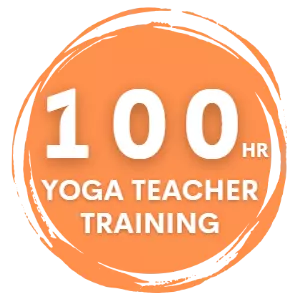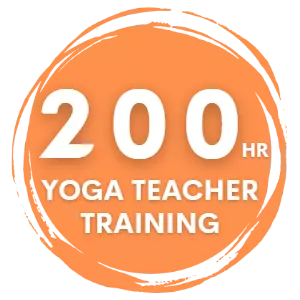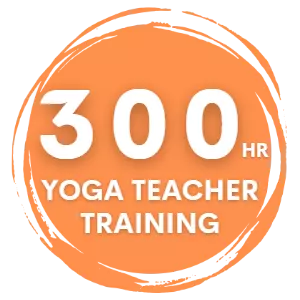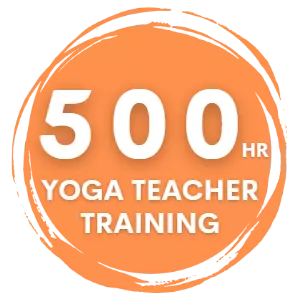HATHA YOGA IN GOA – Yoga for Lifestyle & Healing
Yoga has become one of the most popular and fashionable ways to keep the body in shape and engage in sporting activities. Not many people know that there are so many different types of Yoga that naming all of them simply Yoga is relatively unintelligent.
We develop this article to give you a brief overview of different yoga types. In addition, we have also tried to write a little about some origins of varying yoga types and precisely what differentiates them from other yoga styles.
So browse around, and you will find power and gentle Yoga and vinyasa yoga, a type of ashtanga yoga. That is not all; you can also read about Iyengar, Sahaja Yoga, and Hatha and Kundalini Yoga. We also investigated prenatal Yoga to give your child the best space to grow possible, and of course, we will not leave you without tips on what to wear to yoga practice and keep your chakra that unites your body in perfect condition.
All of this might sound overwhelming at the moment, especially if you knew that there is just yoga, and that is it. Don’t worry; that is why we are here to help you and tell you everything about yoga that you need to know.
HATHA YOGA | हठयोग
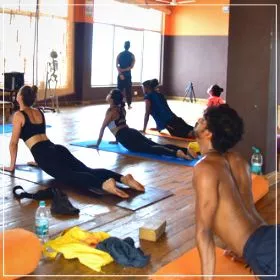 Hatha yoga is a specific yoga system introduced by Yogi Swatmarama in 15th century India. The name Hatha is compounded by Ha and Tha, respectively, meaning the sun and the moon.
Hatha yoga is a specific yoga system introduced by Yogi Swatmarama in 15th century India. The name Hatha is compounded by Ha and Tha, respectively, meaning the sun and the moon.
Hatha yoga is a preparatory stage in cleansing your physical body that keeps your body in shape through practicing a higher level of meditation. Hatha yoga is a powerful practice for purifying the body, the mind, and the soul. This type of Yoga also follows the same principles as Raja yoga.
When people in the Western world talk about Yoga in general, they often mean hatha yoga, as it is practiced quite widely to take care of physical and mental health and is one of the best-known yoga types. Traditional Hatha Yoga follows a relatively predetermined yogic path as it is quite disciplined in physical exercises and meditation. The Hatha Yoga practiced in the Western world usually included postures and movements.
Hatha yoga focuses on the physical culture, similar to Raja yoga. Both yoga types can be referred to as the Ashtanga yoga, consisting of eight parts concentrating on doing different poses.
ASHTANGA YOGA | अष्टांग योग
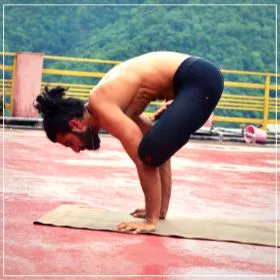 Ashtanga yoga is one of the oldest types of Yoga as it originates from the ancient Yoga Korunta manuscripts by sage Vamana Rishi. Ashtanga yoga has quite a long and exciting history, and it seems that it will also survive in the long run. Nevertheless, Ashtanga yoga has been modified in Mysore Palace, India, where it reached this yoga type’s current form. It is commonly regarded that Sri K. Pattabhi Jois made the changes mentioned above on his way to Satguru, Krishnamacharya.
Ashtanga yoga is one of the oldest types of Yoga as it originates from the ancient Yoga Korunta manuscripts by sage Vamana Rishi. Ashtanga yoga has quite a long and exciting history, and it seems that it will also survive in the long run. Nevertheless, Ashtanga yoga has been modified in Mysore Palace, India, where it reached this yoga type’s current form. It is commonly regarded that Sri K. Pattabhi Jois made the changes mentioned above on his way to Satguru, Krishnamacharya.
Ashtanga yoga concentrates on the eight limbs denoted by the term ashtanga. These limbs are joined through eight spiritual practices. Sage Patanjali determined these eight practices, and they are Yama (the moral codes), Niyama (self-purification and study), Asana (posture), Pranayama (breath control), Pratyahara (sense control), Dharana (concentration), Dhyana (meditation) and Samadhi (contemplation).
Ashtanga yoga follows quite strict guidelines, and at first, it should be practiced with a qualified instructor to get to know about all eight practices. Once ashtanga yoga is mastered, it is regarded as one of the best ways to escape real-life problems and fast pace and find some personal time while exercising the body and relaxing the mind.
VINYASA YOGA | विन्यास योग
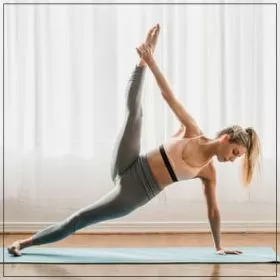 Vinyasa yoga is a form of Ashtanga yoga. The focus is on this style of Yoga on the vinyasa, which means a specific posture that dynamically connects the traditional yoga postures. Vinyasa yoga has strict guidelines as there are six series of poses that are always done in the same order. The posture systems also include specific breathing patterns connected to them and predetermined.
Vinyasa yoga is a form of Ashtanga yoga. The focus is on this style of Yoga on the vinyasa, which means a specific posture that dynamically connects the traditional yoga postures. Vinyasa yoga has strict guidelines as there are six series of poses that are always done in the same order. The posture systems also include specific breathing patterns connected to them and predetermined.
Usually, Ashtangi and vinyasa yoga are done at a pace suitable for each student, so although there is a teacher in the class, everybody can find their Rhythm and follow that.
Vinyasa yoga is beneficial for increasing your flexibility, hard tissue, and tendon strength. Vinyasa yoga creates heat in the body, which cleanses it through increased sweating and fastened circulation. Thus, even harder yoga positions can be done with a decreased possibility of suffering from an injury.
Although vinyasa yoga increases your flexibility, some fitness is required to start doing that type of yoga. Thus, if you are a beginner and have never done yoga before, try out some more accessible training first and then move on to vinyasa yoga.
IYENGAR YOGA | अयंगर योग
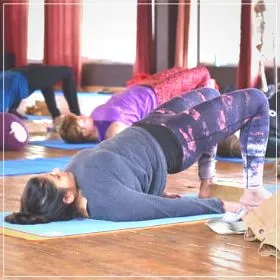 B. K. S. Iyengar is the father of Iyengar Yoga, who also gave this type of Yoga the name. It is based on Patanjali’s traditional eight-limb philosophy in the Yoga Sutras. These eight limbs will help develop the body’s strength, stamina, flexibility, and balance, and improve concentration through meditation.
B. K. S. Iyengar is the father of Iyengar Yoga, who also gave this type of Yoga the name. It is based on Patanjali’s traditional eight-limb philosophy in the Yoga Sutras. These eight limbs will help develop the body’s strength, stamina, flexibility, and balance, and improve concentration through meditation.
Iyengar yoga is a type of Hatha Yoga (also described on this page). It focuses on the body’s alignment through asanas (or, in other words, postures). Through those postures, the body, mind, and the spirit are united to reach health and well-being. Iyengar yoga is an excellent tool to fight stress, relieve short, modern-day life problems, and exercise the body.
Iyengar yoga is highly detail-oriented, and body alignment is under particular focus. Iyengar yoga was the first to start using helping tools, like cushions, straps, benches, straps. These tools would help beginners to reach more challenging postures that are not possible without long practice. The main emphasis is on standing poses in Iyengar yoga. They build up stronger muscles on the legs, increase general vitality, and improve circulation, coordination, and body balance. In classes, the instruction gives quite precise oral guidance, and all misalignments are corrected instantly.
Hatha Yoga in Goa – What is a Hatha Yoga Class like?
Hatha yoga (in Goa) is a category that generally comes to mind when you think of Yoga in regular terms. The exercise involves body, breath, and soul, and classes are often forty-five minutes to ninety minutes of yoga poses, Pranayama, and meditation.
Below is a list of what to expect in a Hatha class
- Pranayama (Breathing) & Meditation: Hatha Yoga classes typically start with breathing and meditation. The teacher will guide you through this session to focus the mind, identify the breath, and construct space for movement.
- Warm-Ups: After the breathing and meditation session, a sequence of traditional Surya Namaskar (sun salutations) is used to heal the body.
- The Poses: A combination of standing and seated poses will explore in the next session. Yoga poses such as Tadasana (Mountain Pose), Vrikshasana (tree pose), Uttanasana (Standing Forward Bend), and Adho Mukha Svanasana (Downward Facing Dog) are frequent. The sequence of postures is varied for each class.
- Light, Sound & Room Temperature: Hatha Yoga classes can be held at room temperature with soft light and soft music to get students in a meditative state.
Health Benefits of Hatha Yoga in Goa
Here are some of the striking benefits of doing Hatha Yoga
- Stress management: Yoga improves psychological or physical stress in twelve studies reviewed, according to the National Center for Complementary and Integrative Health (NCCIH).
- Emotional health: Hatha Yoga has a decisive positive impact on mental health and improves flexibility or healthy psychological fitness.
- Depression and Anxiety: Analysis shows that Hatha Yoga can assist in relieving common depressive and anxiety symptoms.
- Sleeping disorders: Several kinds of research reviewed by government health organizations have found that Hatha Yoga can improve sleep quality and duration.
Although, many kinds of researches and studies have found that that hatha yoga can be helpful in menopause, healthy living, balance, multiple sclerosis, back pain, neck pain, arthritis, and fibromyalgia.
HATHA YOGA TEACHER TRAINING IN INDIA
Teaching yoga is yet another form of personal practice. Becoming a teacher with depth and effectiveness means shifting from the idea of teaching as an expert to the concept of sharing. It is a sharing of a teacher’s firsthand life-changing experience of technique and philosophy rather than a relaying of technique and philosophy.
Hatha Yoga Teacher Training in Goa is designed to guide participants towards practical and real personal integration. A teacher must exhibit precision and safety in teaching poses and understanding what is physically and biochemically occurring during practice on the mat. Offering yoga to others is about guiding others into their own firsthand experiences that encourage relaxation, relieve stress and foster a more profound and more continual state of contented happiness.
THE BENEFITS OF HATHA YOGA INCLUDE:
- Improved flexibility and increased muscle joint mobility.
- Strengthening, toning, and building muscles as flexibility improves.
- Correcting lousy posture by strengthening the spine and spinal muscles, alleviating back pain, and promoting balance and grace.
- Relieving muscular-skeletal conditions such as bad knees, neck issues, tight shoulders, swayback, and scoliosis.
- Increasing stamina and stimulating the endocrine system’s glands can improve digestion and elimination, resulting in better energy levels.
- Enhancing circulation, improving heart conditions, correcting breathing disorders, and boosting immune responses.
- Contributing to reduced cholesterol and blood sugar levels and supporting weight loss efforts.
Please note that while these benefits are commonly associated with Hatha Yoga, consulting with a qualified yoga instructor or healthcare professional is always recommended for personalized guidance and advice.
Hatha Yoga Teacher Training:
For some students of Hatha Yoga, there comes a time when going to practice once or twice a week is no longer enough. There is a need to look deeper to find more clarity and understanding of the essence of Yoga. Be it to transition to another style, explore the Yogic philosophy, or pass on the benefits and gifts Hatha Yoga is bringing to them. For these Yogins/Yoginis, Yoga 4 Peace has developed a Teacher Training program that does just that. It takes one to the next level. They emerge with a new perspective on Yoga and a clear understanding of their place and role in this beautiful tradition.
The cost is $1199 for the 23-day residential Hatha Yoga teacher training program. This training program is registered with “The Yoga Alliance”, the governing body for Hatha Yoga in the United States and the entire world. You will receive an RYT 200-hour level certification from The Yoga Alliance when you complete it. You will be added to the list of Registered Instructors with the Alliance.
The Hatha yoga definition is as follows:
Hatha yoga is the same branch of yoga Tree, The [Hatha] means “force,” and thus it suggests or calls attention to indirectly to the systematic physical techniques of Yoga. In our country, Indian Hatha yoga is associated with popular culture with the ‘joys’ of the Natha Sampradaya via its legendary founder Matsyendranath.
Matsyendranath, also known as the Minamata or Minapa in Tibet, is a saint in each Buddhist and Hindu Tantric and Hatha yoga teacher training school. Therefore, SUBSEQUENTLY, The yoga teacher training goa relates Yoga Hatha with the Dashanami Sampradaya and the mystical parent of Dattatreya.
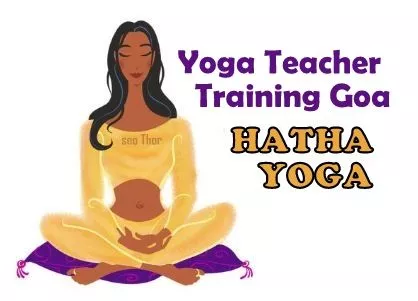
According to the Dattatreya Yoga Sastra:
There are two Hatha Yoga styles: One is practiced using Yajnavalkya, including the 8 Limbs of Ashtanga Yoga, and another is drilled using Kapila and 8 Mudras. In this present time, the oldest dated textual content explaining The Hatha Yoga, the Amrtasiddhi, comes from a Tantric Buddhist milieu.
The oldest texts to use the real verbiage of hatha are also Vajrayana Buddhist.
In this Current 20th century, Hatha Yoga, especially the asanas (Yoga body postures), is grabbing its Rhythm to become popular at some stage in the world as the form of physical workout. Therefore, it is now colloquially termed absolutely “Yoga.”

